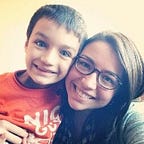Parts of a Whole
Lessons from the Cadaver Lab
If you asked me about my favorite place in my city, I would tell you that it is found in the third floor of the local cadaver lab. Understandably, this seems odd or even concerning, but the massive window panels offer a view of the town that you can’t get anywhere else. Seeing the leaves changing from green to red to orange to brown and the bricks of the buildings preparing for winter from the unique bird’s-eye view was something I didn’t expect to enjoy. I spend countless hours dissecting the bits and pieces of the bodies that lay in the room looking to understand the ways that we all fit together. I could look at them, and see me. I could look at me and see trees, branches darting every which way, unfailingly changing with the seasons. The experience ended up being less about science and more about coming face-to-face with humanity in the place with the most beautiful view.
I learned a lot from rummaging through remnants of bodies laying on metal slabs. I can name every bone and most of the muscles, tendons, ligaments, arteries, and veins. That, ultimately, is of no consequence. Regardless of the names, by and large, we are all made up of the same pieces, the same structures (unless, of course, you’re talking about the psoas minor which is only present in 76% of people, but I think you get the point.) Given this, defining ourselves, isolating ourselves from others, based on our differences seems to be a silly oversight of detail. People are people. People are amazing machines with a great capability to move, and breathe, and live, and love. People are intricately designed in such a way as to be self-sufficient but dependent all at the same time.
Morbid as it may seem, the bodies laying on the tables are not people but they have all the same parts. What makes us human, more than just skin and bones, is the way that we interact with the world around us. The air we breathe, the food we eat, the people we smile at. Those things make us more. They make us whole. As one of my favorite poets, Sarah Kay, notes, “getting the wind knocked out of you is the only way to remind your lungs how much they like the taste of air.” Life: the ups, the downs, and the in-betweens. That is what reminds us how to be human. That is what reminds us what we’re capable of doing.
So, as I sit by the window watching as the weather change, I can’t help but notice all of the people walking around. Then, looking back at the bodies on the table, I feel nothing but gratitude for the fact that I can walk, sit, learn, and leave. Most importantly, I can breathe.
